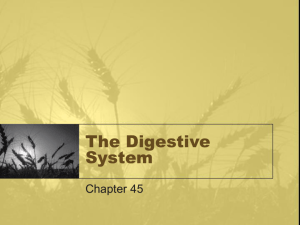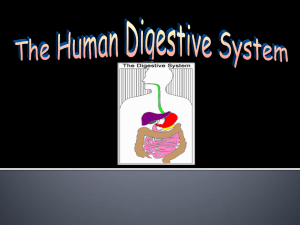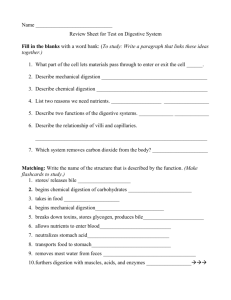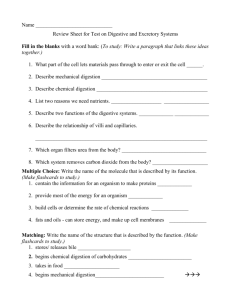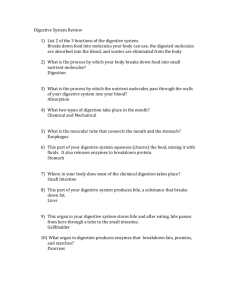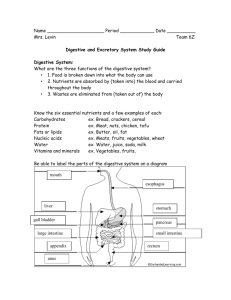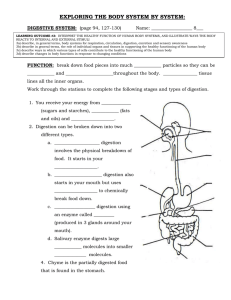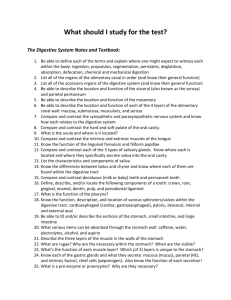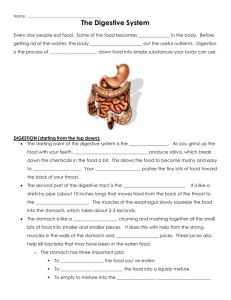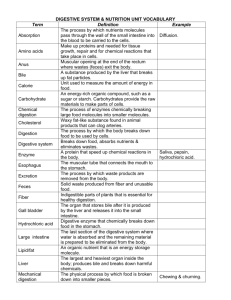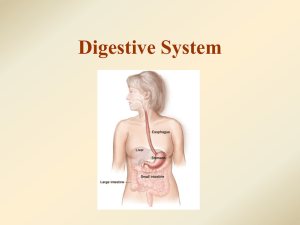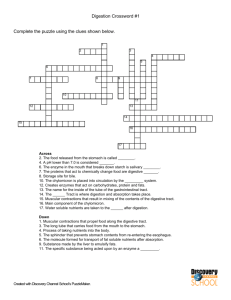Chapter 11: The Digestive System
advertisement
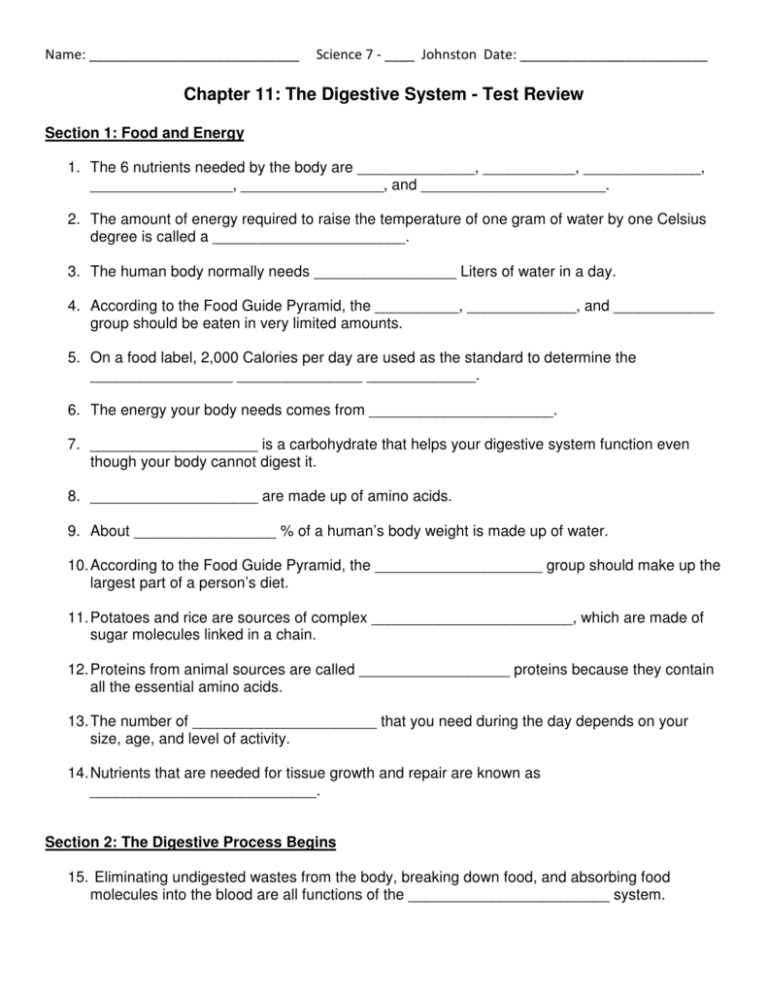
Name: ____________________________ Science 7 - ____ Johnston Date: _________________________ Chapter 11: The Digestive System - Test Review Section 1: Food and Energy 1. The 6 nutrients needed by the body are ______________, ___________, ______________, _________________, _________________, and ______________________. 2. The amount of energy required to raise the temperature of one gram of water by one Celsius degree is called a _______________________. 3. The human body normally needs _________________ Liters of water in a day. 4. According to the Food Guide Pyramid, the __________, _____________, and ____________ group should be eaten in very limited amounts. 5. On a food label, 2,000 Calories per day are used as the standard to determine the _________________ _______________ _____________. 6. The energy your body needs comes from ______________________. 7. ____________________ is a carbohydrate that helps your digestive system function even though your body cannot digest it. 8. ____________________ are made up of amino acids. 9. About _________________ % of a human’s body weight is made up of water. 10. According to the Food Guide Pyramid, the ____________________ group should make up the largest part of a person’s diet. 11. Potatoes and rice are sources of complex ________________________, which are made of sugar molecules linked in a chain. 12. Proteins from animal sources are called __________________ proteins because they contain all the essential amino acids. 13. The number of ______________________ that you need during the day depends on your size, age, and level of activity. 14. Nutrients that are needed for tissue growth and repair are known as ___________________________. Section 2: The Digestive Process Begins 15. Eliminating undigested wastes from the body, breaking down food, and absorbing food molecules into the blood are all functions of the ________________________ system. 16. The process in which your body breaks down food into small nutrient molecules is called _________________________. 17. The function of the _______________________ is to carry food from the mouth to the stomach. 18. ___________________ ________________ must be present in the stomach for pepsin to work best. 19. _____________________ enable the small intestine to absorb large amounts of nutrients. 20. ______________________ in the mouth contains an enzyme that begins chemical digestion. 21. _______________________ is the process that involves muscle contractions that move food through the esophagus. 22. ____________________ is the substance that coats and protects the inside of the stomach. 23. Most chemical digestion takes place in the _______________ ____________________. 24. The ______________________ is the organ that produces bile. 25. The _____________________ stores bile and releases it through a tube into the small intestine. 26. The digestive organ that releases enzymes that help break down starches, proteins, and fats in the small intestine is the _____________________. 27. Enzymes are proteins that help in the kind of digestion called ________________________ digestion. 28. Food does NOT travel through the ___________________ and ___________________. 29. Food is absorbed in the _______________ ______________________ and this is also where almost all chemical digestion takes place. *Be familiar with the pictures of the digestive system that were put into the journal. Section 3: Final Digestion and Absorption 30. In the ____________________ ______________________, water is absorbed from undigested food. 31. One of the roles of the __________________ intestine is to prepare waste material for elimination.



